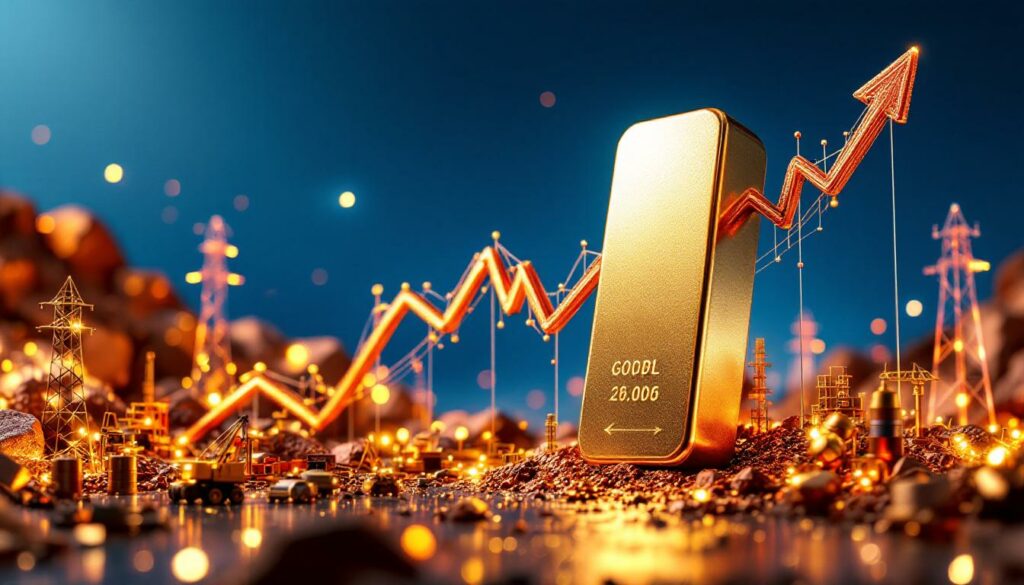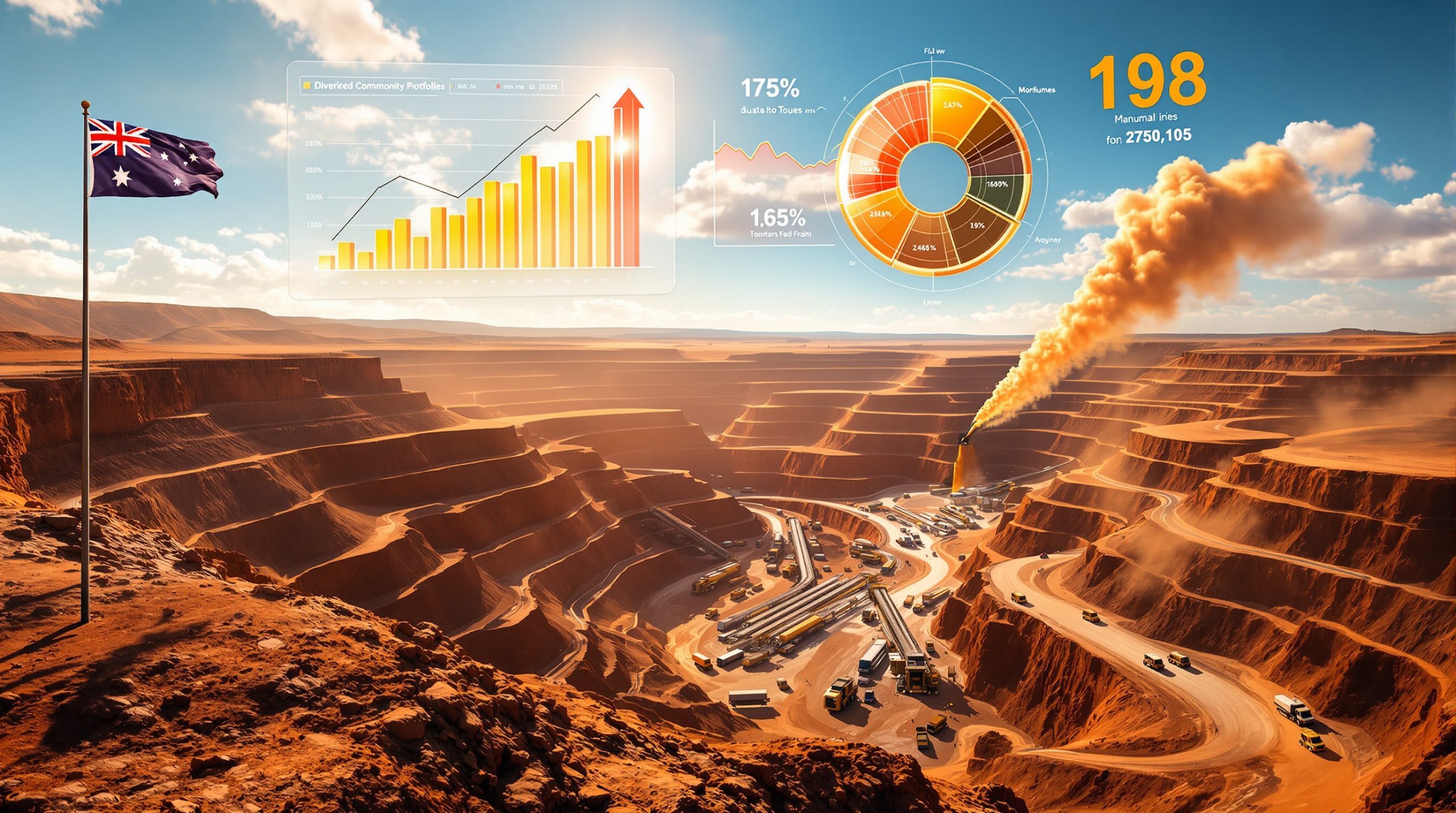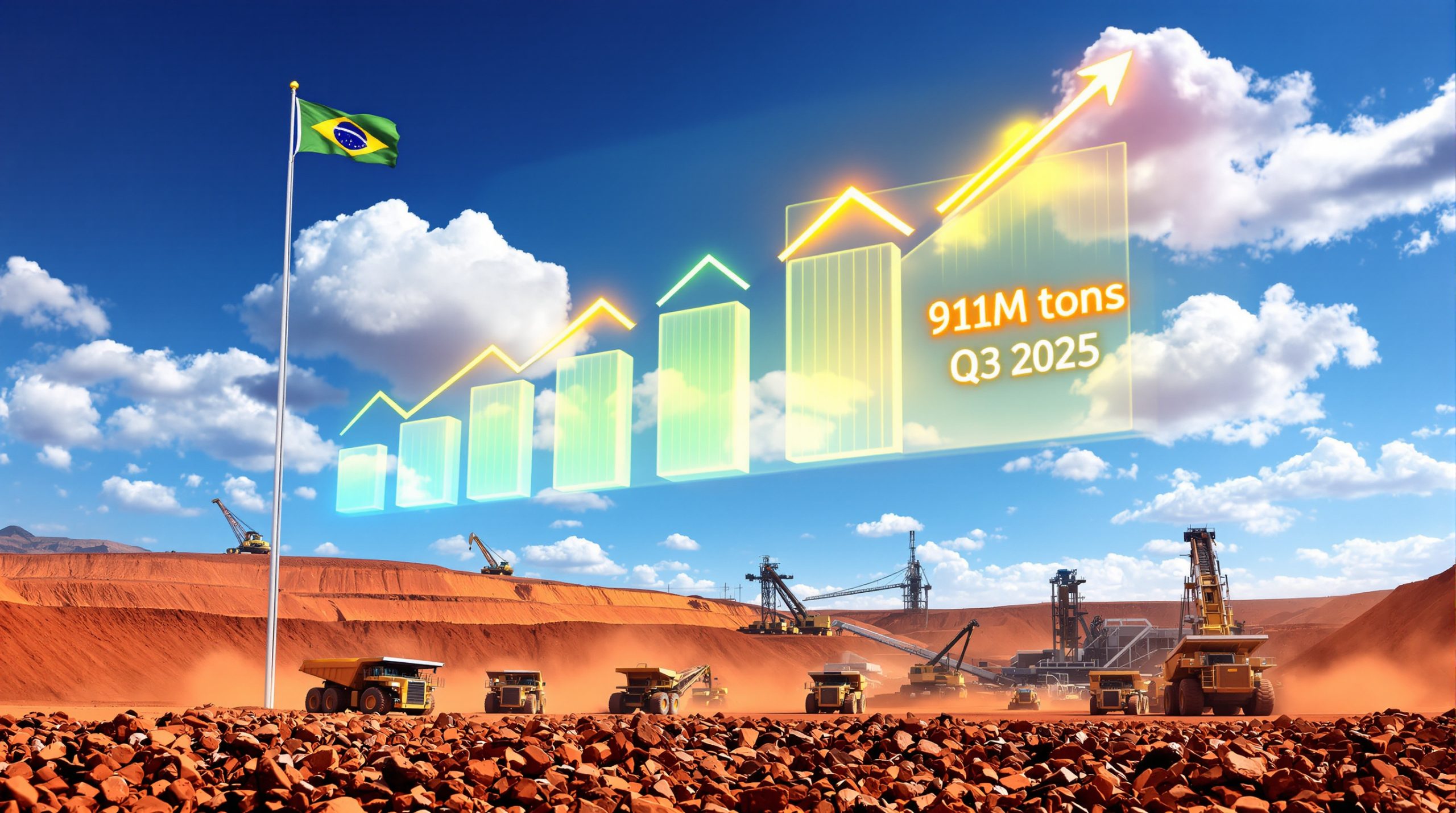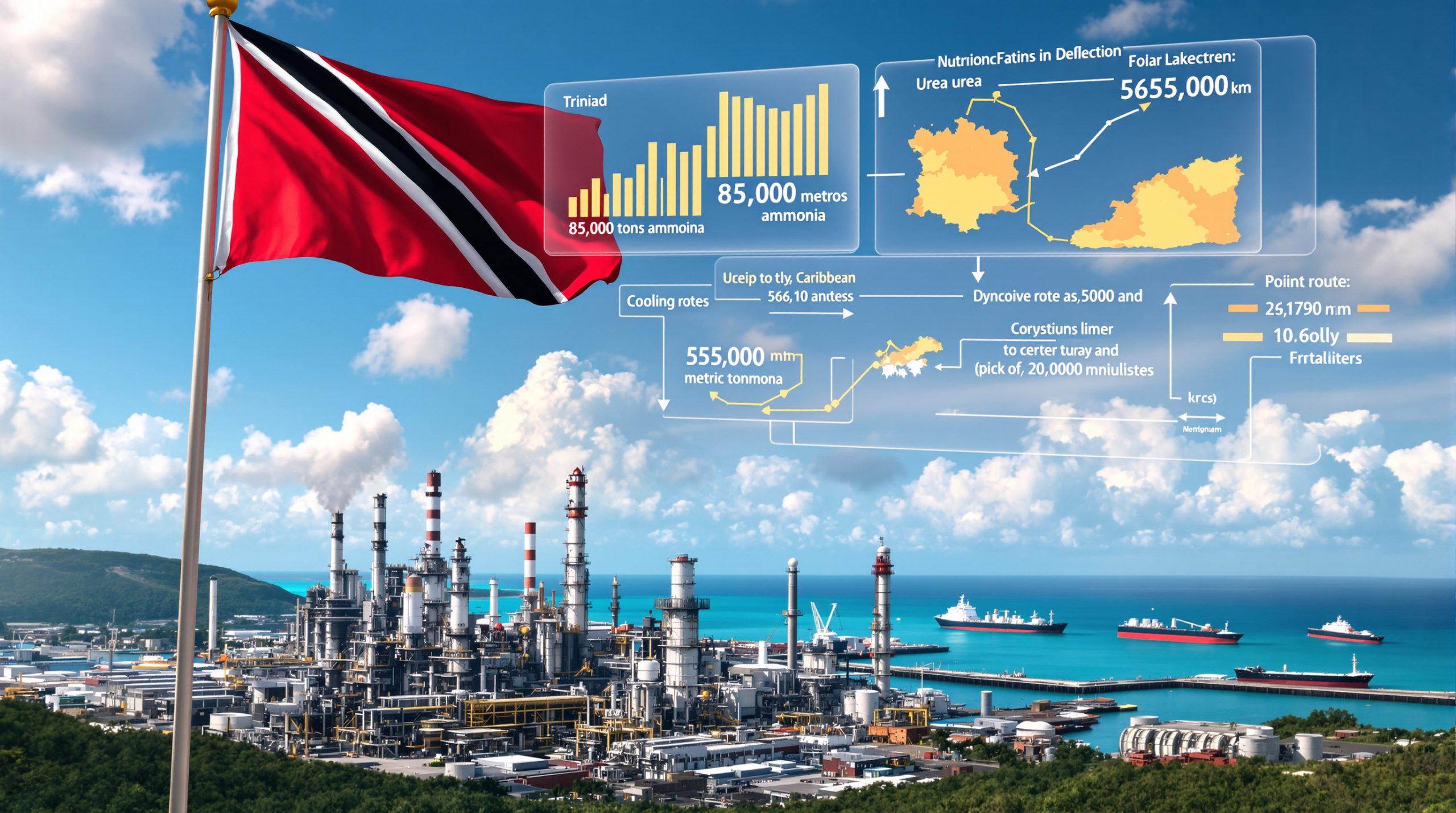What's Driving the Current Copper Market?
The copper market is experiencing a significant structural transformation that positions it as one of the most compelling investment opportunities in the commodities sector. While copper reached all-time highs earlier in 2024, market experts note this rally was primarily driven by speculative positioning rather than the fundamental supply-demand imbalances that will likely propel prices significantly higher in the coming years.
"The pipeline is so close to drive for years and decades to come," explains Lobo Tiggre of The Independent Speculator during a recent VRIC Media panel discussion, highlighting the long-term nature of copper's supply challenges.
Structural Supply Constraints
The copper industry faces severe supply limitations that will impact the market for years, possibly decades:
-
Critical project pipeline shortages: The global pipeline of new copper projects is alarmingly thin, with few major developments advancing toward production.
-
Extended development timelines: New copper mines typically require 7-10 years from discovery to production, creating a significant lag between market signals and supply responses.
-
Grade deterioration: Existing operations face declining ore grades, meaning more material must be processed to extract the same amount of copper, increasing production costs.
-
Permitting bottlenecks: Environmental and social permitting challenges are delaying new projects globally, particularly in traditional mining jurisdictions like Chile and Peru.
-
Insufficient capital investment: The industry has experienced over a decade of underinvestment, leaving it unprepared for rapidly accelerating demand.
These constraints create a structural framework that limits the industry's ability to respond quickly to market signals, even as prices rise.
Rising Demand Fundamentals
Multiple demand drivers are converging to create unprecedented pressure on copper supplies:
-
Electrification trends: The ongoing transition toward electric vehicles, renewable energy, and electrified infrastructure is dramatically increasing copper intensity across industries.
-
Energy transition requirements: Clean energy technologies require significantly more copper than traditional alternatives—an electric vehicle uses up to four times more copper than a conventional vehicle.
-
Grid modernization: Aging electrical infrastructure in developed nations requires substantial upgrading and replacement, while developing countries continue building out their electrical systems.
-
Continued industrialization: Developing nations continue their industrialization trajectories, with copper serving as a fundamental building block for economic development.
-
Electricity access expansion: As Rick Rule of Rule Investment Media noted during the VRIC panel, "A billion people on Earth have no access to primary electricity. Those are all copper buyers whether they know it or not."
The combination of these supply constraints and electrifying copper demand creates a compelling case for sustained higher prices in the coming cycle.
How Are Market Indicators Signaling Copper's Strength?
Several key market indicators point to tightening copper market conditions that typically precede sustained price increases.
LME Inventory Levels
London Metal Exchange (LME) copper inventories have declined significantly in recent periods, indicating physical market tightness. This reduction in available metal typically precedes price increases as consumers compete for limited supplies.
"When the LME stocks go way down and China's having trouble getting its smelters to work… that tells you something about the market," explained Tiggre during the VRIC Media panel, highlighting how inventory levels serve as a leading indicator of market conditions.
Low inventory levels reduce the market's ability to absorb supply disruptions, creating the potential for price volatility and spikes when production issues occur at major mines.
Smelter Economics
Chinese smelters, which process a substantial portion of global copper concentrate, have experienced challenging conditions that signal upstream supply constraints:
-
Treatment charges collapse: Treatment and refining charges (TC/RCs) have dropped to near-zero levels in some cases, indicating smelters are competing aggressively for limited concentrate supplies.
-
Margin compression: Processing margins have compressed significantly, putting financial pressure on smelting operations.
-
Operational adjustments: Some smelters have reduced operating rates due to concentrate shortages, affecting the flow of refined copper to the market.
These smelter economics serve as a critical signal of tightening concentrate markets that eventually impact refined copper availability. The current conditions suggest physical tightness that transcends short-term speculative positioning.
What Makes Copper Different From Other Commodities?
Copper possesses unique characteristics that distinguish it from other commodities and create specific investment considerations.
The "Doctor Copper" Phenomenon
Copper has earned the nickname "Doctor Copper" due to its sensitivity to economic conditions and its ability to "diagnose" the health of the global economy. This characteristic creates:
-
Economic sensitivity: Copper prices tend to reflect broader economic trends, making them more volatile during periods of uncertainty.
-
Cyclical behavior: The metal experiences pronounced price cycles that can create potential buying opportunities during market corrections.
-
Contrarian indicators: Extreme pessimism in copper markets often signals potential value opportunities for investors with longer time horizons.
"Dr. Copper is economically sensitive," Tiggre cautioned during the panel discussion, noting that this sensitivity means "copper stocks have had 50% drawdowns on the way to big wins." This volatility requires investors to maintain a long-term perspective despite potential near-term turbulence.
Infrastructure Essential
Unlike many commodities, copper serves as a fundamental building block for modern infrastructure across multiple applications:
-
Electricity generation: All electricity generation methods—from fossil fuels to renewables—require substantial copper inputs.
-
Power transmission: Copper's superior conductivity makes it essential for efficient power transmission over long distances.
-
End-use applications: From consumer electronics to industrial motors, copper's electrical properties make it irreplaceable in countless applications.
-
Telecommunications: Broadband infrastructure relies heavily on copper, even as fiber optics have replaced some traditional uses.
-
Construction applications: Beyond electrical uses, copper's durability and antimicrobial properties make it valuable in plumbing, roofing, and architectural applications.
As Rick Rule succinctly explained during the VRIC panel, "Copper is how you generate [power], how you get it from where it is to where it's needed, and how you use it." This pervasive role in infrastructure makes copper uniquely positioned to benefit from both traditional economic growth and the energy transition.
How Should Investors Approach the Copper Market?
Developing an effective copper investment strategy requires balancing near-term risks with compelling long-term fundamentals.
Timing Considerations
Market timing presents challenges for copper investors that require thoughtful preparation:
-
Economic uncertainty: Near-term economic concerns may create price volatility despite strong long-term fundamentals.
-
Trade tensions: Ongoing global trade friction impacts sentiment and pricing, particularly for industrially sensitive metals like copper.
-
Political developments: Changes in mining regulations, resource nationalism, and potential tariff impact on copper create uncertainty across the supply chain.
-
Market corrections: As Tiggre noted during the VRIC panel, investors should prepare for the "potential for 50% drawdowns during market corrections" even in high-quality companies.
These timing challenges suggest investors should maintain liquidity reserves to capitalize on potential volatility while maintaining core positions in the sector.
Investment Strategies
Investors can position themselves for copper market opportunities through several complementary approaches:
-
Liquidity reserves: "Saving up cash" for potential "buying opportunities" during corrections, as recommended by Tiggre during the panel discussion.
-
Quality focus: Concentrating investments on companies with "tier-one assets" that can withstand market volatility and generate returns across price cycles.
-
Management evaluation: Prioritizing teams with "proven track records" specifically in copper project development and operations.
-
Development spectrum diversity: Creating a portfolio that includes producers for current income, developers for near-term catalysts, and explorers for maximum upside potential.
This balanced approach allows investors to maintain exposure to the sector's long-term potential while creating optionality to expand positions during market corrections. Furthermore, understanding various copper investment strategies can help maximize returns in this volatile market.
What Catalysts Could Impact Copper Prices?
Understanding potential catalysts—both positive and negative—helps investors prepare for various market scenarios and positioning adjustments.
Potential Bearish Factors
Several factors could create near-term headwinds for copper prices:
-
Economic slowdowns: Recessionary conditions in major economies could temporarily reduce industrial demand.
-
Trade conflict escalation: Increasing trade barriers could disrupt global supply chains and economic growth.
-
Policy uncertainty: Changes in government policies regarding mining, environmental regulations, or resource nationalism create investment hesitation.
-
Inventory fluctuations: Temporary inventory builds from production surges or demand lulls could pressure prices in the short term.
These bearish factors typically affect sentiment and pricing more than fundamental supply-demand dynamics, potentially creating buying opportunities for long-term investors.
Bullish Catalysts
Long-term bullish factors that could accelerate copper's upward trajectory include:
-
Deficit recognition: Wider market recognition of structural supply deficits as they become more apparent in physical markets.
-
Project pipeline inadequacy: Increasing awareness that the current development pipeline cannot meet projected demand growth.
-
Production cost inflation: Rising costs across the mining industry establishing higher price floors for economically viable production.
-
Energy transition acceleration: Growing recognition of copper's critical role in electrification and decarbonization efforts globally.
-
Industrial policy support: Government initiatives to secure critical mineral supplies for strategic industries and national security.
The convergence of these bullish factors with limited supply elasticity creates the potential for significant price appreciation over the medium to long term. Many experts have shared bullish copper price predictions that reflect these fundamental drivers.
How Does Copper Compare to Other Metals Investments?
Copper offers a distinctive investment profile compared to both precious and battery metals, with specific advantages in each comparison.
Copper vs. Precious Metals
While gold and silver currently show momentum as monetary metals, copper presents a different investment case:
-
Dual exposure: Copper offers exposure to both traditional industrial growth and energy transition themes.
-
Operational scale: Copper mining typically involves larger-scale operations with longer mine lives and more stable production profiles.
-
Deposit significance: Copper deposits tend to be larger and more economically significant, with Rick Rule noting during the panel that major producers operate "mines that make $2-3 million a day."
-
Infrastructure demand: While precious metals benefit from financial uncertainty, copper benefits from both traditional growth and structural transitions in energy systems.
These characteristics make copper complementary to precious metals in a diversified resources portfolio, offering different response patterns to various economic scenarios.
Copper vs. Battery Metals
Compared to lithium, nickel, and other battery metals that have attracted significant investor attention:
-
Market scale: The copper market is significantly larger and more liquid than specialized battery metal markets.
-
Application diversity: Copper's uses extend far beyond battery applications, providing broader economic exposure.
-
Supply chain maturity: As Tiggre noted in the panel, copper's "supply chain is more established and mature" with greater transparency and stability.
-
Price discovery efficiency: Copper benefits from transparent exchange trading and deep futures markets that improve price discovery.
These advantages make copper potentially less volatile than more specialized battery metals while still providing substantial exposure to electrification themes.
What Types of Copper Companies Offer Investment Potential?
The copper sector offers investment opportunities across various development stages, each with distinct risk-reward profiles.
Major Producers
Established copper producers offer several advantages for investors:
-
Immediate price exposure: Direct operational leverage to current copper prices without development delays.
-
Cash flow generation: Steady production creates reliable cash flows at current price levels, with potential for significant expansion as prices rise.
-
Operational expertise: Established technical and management capabilities reduce execution risk.
-
Dividend potential: Many larger producers offer dividend income that can increase with rising copper prices.
While producers offer lower risk profiles, they typically provide less leverage to rising copper prices than earlier-stage companies.
Developers
Companies advancing copper projects toward production present compelling opportunities:
-
Price leverage: Developers typically offer greater share price sensitivity to rising copper prices as projects approach production decisions.
-
Strategic value: Quality developers become potential acquisition targets for major producers seeking to replenish reserves.
-
De-risking progression: Systematic advancement through development milestones creates value independent of short-term copper price movements.
-
Re-rating potential: Successful transition from developer to producer typically brings valuation multiple expansion.
Developers require careful evaluation of technical feasibility, capital requirements, and permitting pathways to assess their probability of successfully reaching production.
Explorers
Exploration-focused companies offer the highest risk-reward proposition:
-
Discovery potential: Successful copper discoveries can create exponential returns from very low starting valuations.
-
Early positioning: Exploration provides opportunity to invest before institutional capital becomes available at later development stages.
-
Portfolio necessity: As Rick Rule emphasized during the panel, explorers require a "portfolio approach due to higher risk" rather than concentrated positions.
-
Management differentiation: The quality of geological and technical teams becomes particularly critical at the exploration stage.
Explorers should represent a smaller allocation within a copper portfolio, reflecting their higher risk profile while providing exposure to potential outsized returns.
How Can Investors Evaluate Copper Companies?
Effective company evaluation requires rigorous assessment across multiple dimensions to identify the most promising investment opportunities.
Key Assessment Criteria
When evaluating copper investment opportunities, investors should consider:
-
Management capability: Teams "proven to be successful at the task at hand" as Rule emphasized during the panel, with specific experience in copper project development.
-
Project economics: Robust economics across various copper price scenarios, with particular attention to capital intensity and operating cost position.
-
Jurisdictional considerations: Realistic assessment of permitting timelines, taxation stability, and resource nationalism risks in project locations.
-
Capital structure: Financing requirements relative to current market capitalization and likely dilution through development phases.
-
Resource expansion potential: Geological upside beyond current defined resources that could extend mine life or increase production scale.
These criteria should be applied differently across the development spectrum, with producers evaluated more on current operations and explorers on technical team quality and target potential.
Red Flags to Watch
Warning signs that may indicate problematic investments include:
-
Unrealistic timelines: Development schedules that compress industry-standard timeframes without clear justification.
-
Capital requirement underestimation: Project budgets that appear significantly below comparable development projects.
-
Metallurgical challenges: Downplaying complex ore characteristics that could impact recovery rates or processing costs.
-
Excessive dilution history: Companies with patterns of substantial share issuance with limited corresponding project advancement.
-
Promotional management: Leadership focused more on marketing than systematic technical advancement of projects.
As Tiggre cautioned during the panel, these red flags often indicate "lifestyle companies with minimal progress" that consume capital without creating proportionate shareholder value.
What's the Long-Term Outlook for Copper?
The long-term copper outlook remains exceptionally strong despite potential near-term volatility, supported by fundamental supply-demand imbalances.
Supply-Demand Projections
Industry analysts and participants project increasingly tight market conditions:
-
Widening deficit: A growing supply deficit beginning mid-decade that could reach several million tonnes annually by 2030.
-
Limited supply response: Constrained ability to rapidly increase production due to grade declines, permitting challenges, and project development timelines.
-
Demand acceleration: Increasing demand intensity from electrification trends across transportation, energy generation, and industrial applications.
-
Production economics: Rising marginal cost of production as the industry develops more complex, lower-grade, and geographically challenging deposits.
These projections suggest a multi-year period of structural undersupply that cannot be quickly resolved through normal market mechanisms. Understanding the global copper supply forecast is crucial for investors looking to position themselves appropriately.
Price Potential
While specific price targets vary among analysts, structural factors support:
-
Sustained higher trading range: Establishment of a higher base trading range for copper compared to historical averages.
-
Price record potential: Possibility of new nominal price records as physical shortages emerge in key consuming regions.
-
Volatility increases: Greater price volatility as inventories remain constrained and supply disruptions have magnified market impacts.
-
Valuation expansion: Premium valuations for copper producers and developers compared to historical averages as investors recognize scarcity value.
These price dynamics will likely create both challenges and opportunities for investors, requiring strategic positioning and psychological preparation for volatility within a bullish long-term trend.
FAQs About Copper Market Trends
What impact would a recession have on copper prices?
A recession could temporarily depress copper prices due to reduced industrial demand, potentially creating buying opportunities for long-term investors. However, the structural supply constraints would remain unchanged, setting the stage for a stronger recovery when economic growth resumes. Historical patterns suggest copper may see significant price reductions during economic contractions, but these typically prove temporary against the backdrop of constrained supply growth.
How do copper tariffs affect the market?
Tariffs can distort regional pricing and trade flows but generally don't change the fundamental supply-demand balance. They may create winners and losers among producers depending on their geographic footprint and customer base. Companies with production in tariff-imposing countries may gain competitive advantages, while those relying on cross-border trade could face margin compression. Investors should monitor company-specific exposure to trade policy changes rather than making broad sector decisions based on tariff developments.
Which countries control the most copper production?
Chile remains the world's largest copper producer, followe
Want to Know When the Next Major Copper Discovery Happens?
Stay ahead of the market with Discovery Alert's proprietary Discovery IQ model, which provides instant notifications on significant ASX mineral discoveries, including copper. Explore how historic discoveries have generated substantial returns by visiting the dedicated discoveries page and position yourself to capitalise on the next major find.




